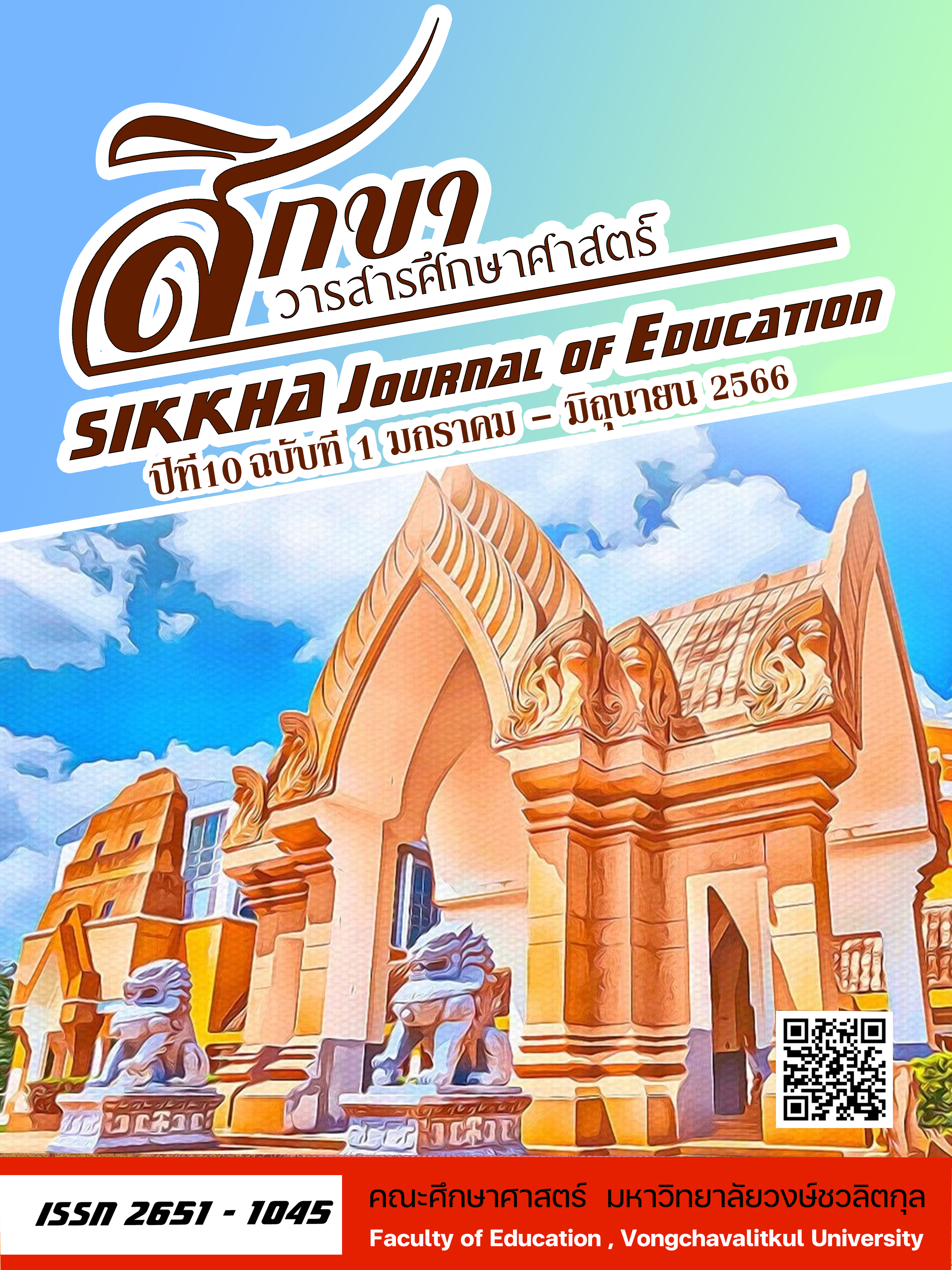ปัจจัยที่ส่งผลต่อพฤติกรรมการมุ่งทำงานเชิงสร้างสรรค์ของผู้บริหารองค์กรปกครองส่วนท้องถิ่น จังหวัดนนทบุรี
คำสำคัญ:
พฤติกรรมการมุ่งทำงานเชิงสร้างสรรค์, ผู้บริหารองค์กรส่วนปกครองท้องถิ่น จังหวัดนนทบุรีบทคัดย่อ
การวิจัยครั้งนี้มีวัตถุประสงค์เพื่อ 1) ศึกษาระดับพฤติกรรมการมุ่งทำงานเชิงสร้างสรรค์ของผู้บริหารองค์กรปกครองส่วนท้องถิ่น จังหวัดนนทบุรี 2) ศึกษาระดับปัจจัยที่ส่งผลต่อพฤติกรรมการมุ่งทำงานเชิงสร้างสรรค์ของผู้บริหารองค์กรปกครองส่วนท้องถิ่น จังหวัดนนทบุรี และ 3) ศึกษาปัจจัยที่ส่งผลต่อพฤติกรรมการมุ่งทำงานเชิงสร้างสรรค์ของผู้บริหารองค์กรปกครองส่วนท้องถิ่น จังหวัดนนทบุรี โดยศึกษากลุ่มตัวอย่างในการวิจัย คือ ผู้บริหารองค์กรปกครองส่วนท้องถิ่น จังหวัดนนทบุรี จำนวน 105 คน โดยการสุ่มกลุ่มตัวอย่างแบบหลายขั้นตอน (multi-stage random sampling) เครื่องมือที่ใช้ในการเก็บรวบรวมข้อมูล ได้แก่ 1) แบบสอบถามพฤติกรรมการมุ่งทำงานเชิงสร้างสรรค์ของผู้บริหาร 2) แบบสอบถามการมุ่งการเรียนรู้ของผู้บริหาร 3) แบบสอบถามบรรยากาศในการทำงาน 4) แบบสอบถามภาวะผู้นำเชิงนวัตกรรมของผู้บริหาร และแบบสอบถามแรงจูงใจใฝ่สัมฤทธิ์ของผู้บริหาร แบบสอบถามมีค่า IOC ระหว่าง 0.80-1.00 มีค่าอำนาจจำแนกรายข้อระหว่าง 0.22-0.74 และมีค่าความเชื่อมั่นเท่ากับ 0.92, 0.94, 0.91, 0.94 และ 0.92 ตามลำดับ สถิติที่ใช้ในการวิเคราะห์ข้อมูล ได้แก่ ความถี่ ร้อยละ ค่าเฉลี่ย ส่วนเบี่ยงเบนมาตรฐาน ค่าสหสัมพันธ์ และการวิเคราะห์อิทธิพลหรือการวิเคราะห์เส้นทาง (Path Analysis : PA)
ผลการวิจัยพบว่า 1) พฤติกรรมการมุ่งทำงานเชิงสร้างสรรค์ของผู้บริหารอยู่ในระดับมาก 2) ระดับปัจจัยที่ส่งผลต่อพฤติกรรมการมุ่งทำงานเชิงสร้างสรรค์ของผู้บริหารองค์กรปกครองส่วนท้องถิ่น จังหวัดนนทบุรี พบว่า (2.1) การมุ่งการเรียนรู้ของผู้บริหารอยู่ในระดับมากที่สุด (2.2) บรรยากาศในการทำงานอยู่ในระดับมากที่สุด (2.3) ภาวะผู้เชิงนวัตกรรมของผู้บริหารอยู่ในระดับมากที่สุด และ (2.4) แรงจูงใจใฝ่สัมฤทธิ์ของผู้บริหารอยู่ในระดับมาก และ 3) พฤติกรรมการมุ่งทำงานเชิงสร้างสรรค์ของผู้บริหารองค์กรส่วนปกครองท้องถิ่น จังหวัดนนทบุรี ได้รับอิทธิพลทางตรงจากระดับการมุ่งการเรียนรู้ของผู้บริหาร ระดับบรรยากาศในการทำงาน ระดับภาวะผู้นำเชิงนวัตกรรมของผู้บริหาร และระดับแรงจูงใจใฝ่สัมฤทธิ์ของผู้บริหาร โดยตัวแปรสี่ตัวแปรนี้สามารถร่วมกันอธิบายความแปรปรวนของพฤติกรรมการมุ่งทำงานเชิงสร้างสรรค์ของผู้บริหารองค์กรปกครองส่วนท้องถิ่น จังหวัดนนทบุรี (R2) ได้ร้อยละ 84.00 อย่างมีนัยสําคัญทางสถิติที่ระดับ .01 และได้รับอิทธิพลทางอ้อมจากการมุ่งการเรียนรู้ผ่านแรงจูงใจใฝ่สัมฤทธิ์ของผู้บริหาร อิทธิพลทางอ้อมจากบรรยากาศในการทำงานผ่านแรงจูงใจใฝ่สัมฤทธิ์ของผู้บริหารและภาวะผู้นำเชิงนวัตกรรมของผู้บริหาร และอิทธิพลทางอ้อมจากแรงจูงใจสัมฤทธิ์ของผู้บริหารผ่านทางภาวะผู้นำเชิงนวัตกรรมของผู้บริหาร
References
แก้วตา ศรอดิศักดิ์. (2560). ปัจจัยเหตุและผลของพฤติกรรมสร้างสรรค์นวัตกรรมของพนักงานธนาคารกรุงเทพ เขตจังหวัดนครปฐม (วิทยานิพนธ์บริหารธุรกิจมหาบัณฑิต). มหาวิทยาศิลปากร, นครปฐม.
ชยนรรจ์ ขาวปลอด และทิพย์รัตน์ เลาหวิเชียร. (2561). การมุ่งการเรียนรู้ ความสามารถทางการแข่งขัน และผลการดำเนินงานทางธุรกิจของอุตสาหกรรมในประเทศไทย. วารสารการจัดการ WMS Journal of Management WMS Journal of Management Walailak University, 7(2), 87-96.
ดนุวัศ สุวรรณวงศ์. (2564). แนวทางการยกระดับความร่วมมือเพื่อเพิ่มประสิทธิภาพในการจัดบริการสาธารณะระหว่างองค์กรปกครองส่วนท้องถิ่นระดับเทศบาลในพื้นที่อำเภอหาดใหญ่ จังหวัดสงขลา. วารสารการเมืองการปกครอง, 11(2), 168-184.
ดรรชนี จิตคำรพ. (2561). แรงจูงใจใฝ่สัมฤทธิ์ของผู้บริหารสถานศึกษา สังกัดสำนักงานเขตพื้นที่การศึกษามัธยมศึกษา เขต 16 (วิทยานิพนธ์ศึกษาศาสตรมหาบัณฑิต). มหาวิทยาลัยหาดใหญ่, สงขลา.
ปัทมา ศรีมณี. (2562). ปัจจัยที่ส่งผลต่อพฤติกรรมการสร้างสรรค์นวัตกรรมระดับบุคคล : กรณีศึกษา พนักงานสายสนับสนุนมหาวิทยาลัยสงขลานครินทร์ (วิทยาเขตหาดใหญ่) (วิทยานิพนธ์รัฐประศาสนศาสตรมหาบัณฑิต). มหาวิทยาลัยสงขลานครินทร์, สงขลา.
แพรลฎา พจนารถ และกฤษดา เชียรวัฒนสุข. (2563). ภาวะผู้นำเชิงนวัตกรรมเพื่อความได้เปรียบในการแข่งขันขององค์การในศตวรรษที่ 21. วารสารวิทยาการจัดการปริทัศน์, 22(1), 241-257.
โมลี สุทฺธิโมลิโพธิ. (2563). ลักษณะของบุคคลที่มีแรงจูงใจใฝ่สัมฤทธิ์. วารสารพุทธจิตวิทยา, 5(2), 11-16.
รัชชพงษ์ ชัชวาล. (2560). โมเดลสมการโครงสร้างพฤติกรรมการสร้างสรรค์นวัตกรรมของพนักงานองค์กรปกครองส่วนท้องถิ่นในภาคใต้ของประเทศไทย : ทดสอบความไม่แปรเปลี่ยนข้ามประเภทองค์การ (วิทยานิพนธ์ปรัชญาดุษฎีบัณฑิต). มหาวิทยาลัยสงขลานครินทร์, สงขลา.
สมศักดิ์ ดลประสิทธิ์. (2564). แนวทางการจัดการศึกษาเพื่อพัฒนากำลังคนในศตวรรษที่ 21. ครุสภาวิทยาจารย์, 2(1),1-15.
Hu, L. T., & Bentler, P. M. (1999). Cutoff Criteria for Fit Indexes in Covariance Structure Analysis: Conventional Criteria Versus New Alternatives. Structural Equation Modeling, 6(1), 1–55.
Krejcie, R. V. & Morgan, D. W. (1970). Determining Sample Size for Research Activities. Educational and Psychological Measurement, 30(3), 607-610.
Rasch, G. (1980). Probabilistic Models for some Intelligence and Attainment Tests. Chicago, IL: University of Chicago Press.
Senge, P. M. (1990). The Fifth Discipline: The Art and Practice of the Learning Organization. New York: Doubleday.
Singh, K., Granvill, M. & Dika. S. (2002). Mathematice and Science Achievement: Effect of Motivation, Interest and Academic Engagement. The Journal of Education Research, 95(6), 323–332.
Slatten, T., & Mehmetoglu, M. (2011). Antecedents and Effects of Engaged Frontline Employees: A Study from the Hospitality Industry. Managing Service Quality: An International Journal, 21(1), 88-107.
Downloads
เผยแพร่แล้ว
How to Cite
ฉบับ
บท
License
Copyright (c) 2023 สิกขา วารสารศึกษาศาสตร์

This work is licensed under a Creative Commons Attribution-NonCommercial-NoDerivatives 4.0 International License.


